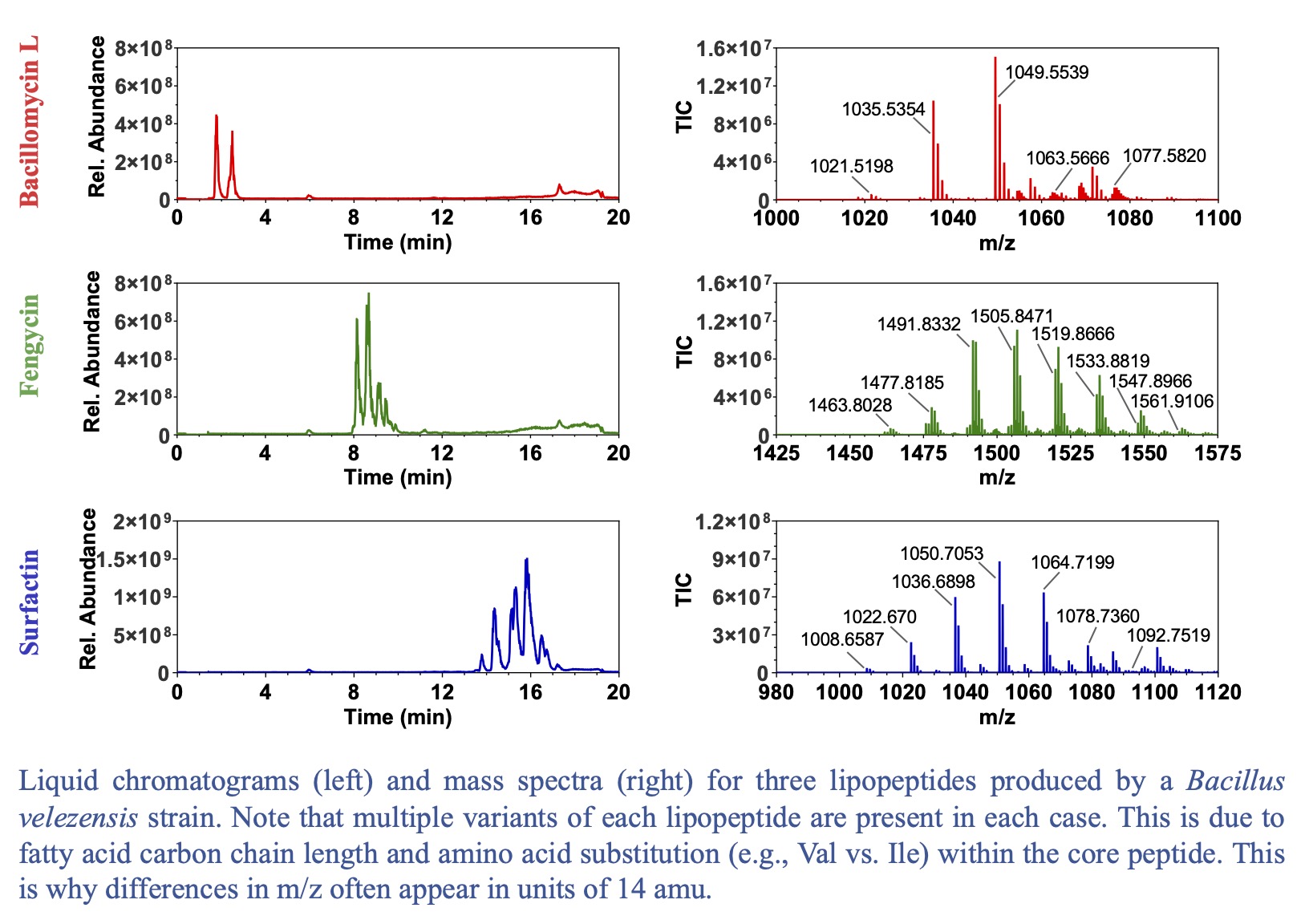Many Bacillus species produce a
structurally diverse set of so-called secondary metabolites;
many of these compounds inhibit the growth of root-associated
pathogens. As such, these bacteria and the compounds they
generate hold exceptional promise for protection of globally
essential agricultural products.
Secondary metabolism encompasses the production
of small organic compounds that are not strictly essential for
the moment-to-moment survival of cells but often do impart novel
properties that enable an organism to occupy a particular
ecological niche. Invariably, the series of enzyme activities
necessary for producing these metabolites are encoded in
biosynthetic gene clusters (BGCs). Different types of BGCs give
rise to different classes of secondary metabolites, including
polyketides (PKs), non-ribosomal peptides (NRPs),
ribosomally-synthesized post-translationally modified peptides
(RiPPs), and others. Within classes there is substantial
variation, often depending on the specific identity and
arrangement of modules which compose a given BGC.
Many Bacillus species carry multiple
BGCs of various classes. Very often, the secondary metabolites
generated from them have antibiotic properties against bacteria,
fungi, and/or oomycetes. In collaboration with the Liles
and Noel
laboratories, we are evaluating the antibiosis properties
(breadth of organisms inhibited, potency of inhibition, etc.) of
many hundreds of Bacillus strains spanning multiple species.
From complete genome sequence data, we are able to identify the
BGCs encoded within each Bacillus strain. We extract
metabolites from active Bacillus cultures, evaluate
their antibiotic properties, and use metabolomic tools (e.g.,
LC-MS/MS) to identify and characterize these compounds. Strains
from B. velezensis are particularly prolific in the
production of secondary metabolites, and the compounds that many
of them generate give rise to broad spectrum abilities to
inhibit notorious agricultural pathogens, including Phytophthora
nicotianae, Globisporangium ultimum, Rhizoctonia
solani,
Fusarium oxysporum, etc.
